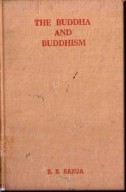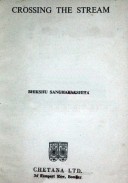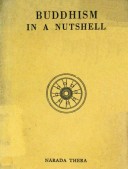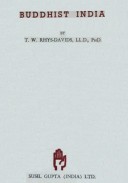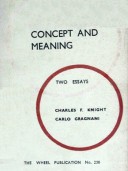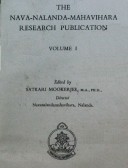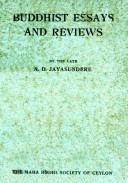Tìm Sách
Sách tiếng Anh-English >> The Buddha and Buddhism
Thông tin tra cứu
- Tên sách : The Buddha and Buddhism
- Tác giả : B. R. Barua
- Dịch giả :
- Ngôn ngữ : Anh
- Số trang : 220
- Nhà xuất bản : Maha Bodhi Society
- Năm xuất bản : 1958
- Phân loại : Sách tiếng Anh-English
- MCB : 12010000003028
- OPAC :
- Tóm tắt :
THE BUDDHA AND BUDDHISM
By
B . R . BARUA,
Life member:
Maha Bodhi Society
President:
ALL INDIA BUDDHIST CONFERENCE
CALCUTTA, 1931
Member: Board of Trustees:
YOUNGMEN’S BUDDHIST ASSOCIATION,
(Akhil Bharatiya A,D. SEVA SANGHA), Darjeeling,
Member:
BUDDHA-GAYATEMPLEMANAGEMENT COMMITTEE,
1958-1962,
Delegate:
WORSD FELLOWSHIP OF BUDDHISTS,
BANGKOK, 1958
AUTHOR OF OTHER BOOKS
CONTENTS
1. THE LIFE OF BUDDHA
Early life
Great renunciation
Enlightenment of the Buddha
Arya Satya (Noble truths)
2. BUDDHA’S MINISTRY
Buddha with Anathapindaka,
Visakha, Ambapali and others
3. THE SANGHA
4. BUDDHISM, THE SANATAN DHARMA
5. MAHAPARINIRVANA
The Parinirvana of the Tathagata
Dharma after Parinirvana, First council
The second council
6. ASOKA
The third council
7. RISE OF MAHAYANA BUDDHISM
School of Mahayana Buddhism
Avatansaka
Madhyamika
The vijnanavada or Yogachara
Saddharma Pundarika
8. THE BASIC BOOKS OF BUDDHISM
9. KANISHKA
Buddhist universities
Teaching in Nalanda
Some aspects of Hinayana and Mahayana
Manjusri
10. BELIEF OF THE DEVOUT
The origin of Buddhist art
Parable of Angulimala
Parable of the farmer
11. ETHICS IN BUDDHISM
12. MORALITY IN BUDDHISM
Mangal Sutta
Dhammapada
Basala Sutta
Amagandha Sutta
Utthana Sutta
13. ARHATHOOD IN BUDDHISM
14. NIBBANA IN BUDDHISM
15. MEDITATION IN BUDDHISM
16. BUDDHISM WAYOF LIFE
Buddhism forgotten in India
Glimpses of remembrance
17. BUDDHISM IN OTHER LANDS
Buddhism in Chittagong
Buddhism in Ceylon
Buddhism in Thailand
Buddhism in Burma
Buddhism in Tibet
Buddism in China
Buddhism in Mongolia and Siberia
18. Buddhism and Nationalism
19. international Buddhism and Universal peace
20. revival of Buddhism in India
PREFACE
The book gives the story of the life of the Buddha and the religion that sprang up from his teachings. It explains the enlightenment that he attained and the philosophy of three universal Laws, Four Noble Truths and the Eightfold steps to Nirvana, that he preached.
The book strives to explain the theory of Kamma and Paticcasamuppada (dependent-origination) that was advanced by the Buddha. His mission and the institution of the Sangha have found special treatment. The history, archeology, art and culture of Buddhism have been dealt with. No pain has been spared to include in the text all that a Buddhist would need to known.
The Theravada, Mahayana and the Esoteric (meditation) views have been held out to the readers for their personal appreciation, appraisal and acceptance. The vast subject of Mahayana schools has been concised and the four principal schools, Avatansaka, Madhyamika, Yogachara and Saddharma Pundarika have been described to the full.
Adequate space has been devoted to Buddhist myths and Beliefs, Ethics, Morality, Arhathood, the Esoteric Experience (Dhyana), Bodhisattvahood and Nirvana.
To apprise the readers of the various vicissitudes in the life of the Buddhists through the centuries, a few chapters have been incorporated, suchas Buddhist way of life, Buddhism and Nationalism, Buddhism in various countries and the revival of Buddhism in India.
Matters of philosophy and records of history have been kept to the original as far as possible to avoid misinterpretation.
The author does not claim any originality for himself in this work. All the materials and informations have been drawn out from the books which he studied pertaining to Buddhism. All credit for original research and authenticity should go to them. The author claims none for himself. He expresses his deep pratitude to all of them.
 Facebook
Facebook
 Google
Google
 Google+
Google+
